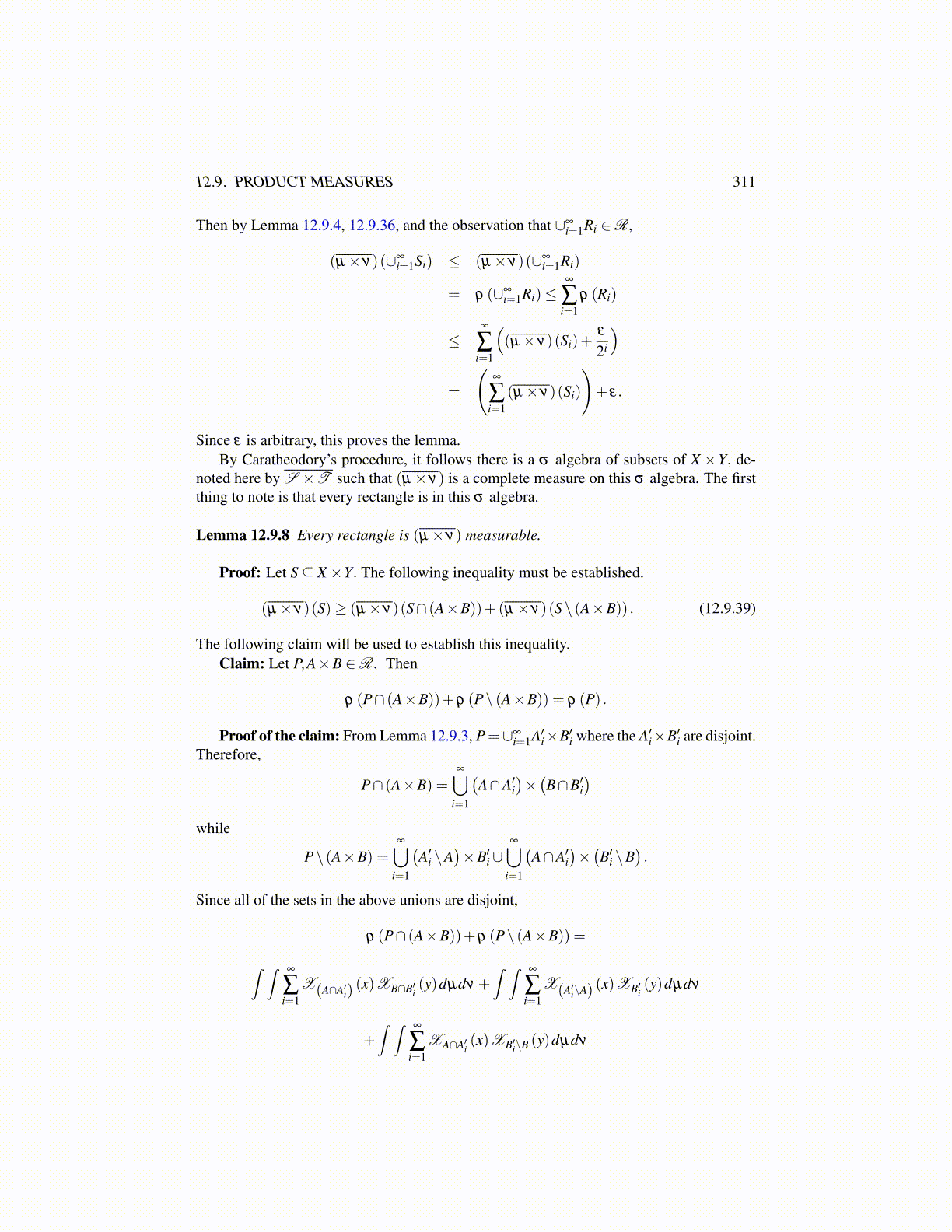
12.9. PRODUCT MEASURES 311
Then by Lemma 12.9.4, 12.9.36, and the observation that ∪∞i=1Ri ∈R,
(µ×ν)(∪∞i=1Si) ≤ (µ×ν)(∪∞
i=1Ri)
= ρ (∪∞i=1Ri)≤
∞
∑i=1
ρ (Ri)
≤∞
∑i=1
((µ×ν)(Si)+
ε
2i
)=
(∞
∑i=1
(µ×ν)(Si)
)+ ε.
Since ε is arbitrary, this proves the lemma.By Caratheodory’s procedure, it follows there is a σ algebra of subsets of X ×Y, de-
noted here by S ×T such that (µ×ν) is a complete measure on this σ algebra. The firstthing to note is that every rectangle is in this σ algebra.
Lemma 12.9.8 Every rectangle is (µ×ν) measurable.
Proof: Let S⊆ X×Y. The following inequality must be established.
(µ×ν)(S)≥ (µ×ν)(S∩ (A×B))+(µ×ν)(S\ (A×B)) . (12.9.39)
The following claim will be used to establish this inequality.Claim: Let P,A×B ∈R. Then
ρ (P∩ (A×B))+ρ (P\ (A×B)) = ρ (P) .
Proof of the claim: From Lemma 12.9.3, P=∪∞i=1A′i×B′i where the A′i×B′i are disjoint.
Therefore,
P∩ (A×B) =∞⋃
i=1
(A∩A′i
)×(B∩B′i
)while
P\ (A×B) =∞⋃
i=1
(A′i \A
)×B′i∪
∞⋃i=1
(A∩A′i
)×(B′i \B
).
Since all of the sets in the above unions are disjoint,
ρ (P∩ (A×B))+ρ (P\ (A×B)) =
∫ ∫ ∞
∑i=1
X(A∩A′i)(x)XB∩B′i
(y)dµdν +∫ ∫ ∞
∑i=1
X(A′i\A)(x)XB′i
(y)dµdν
+∫ ∫ ∞
∑i=1
XA∩A′i(x)XB′i\B (y)dµdν